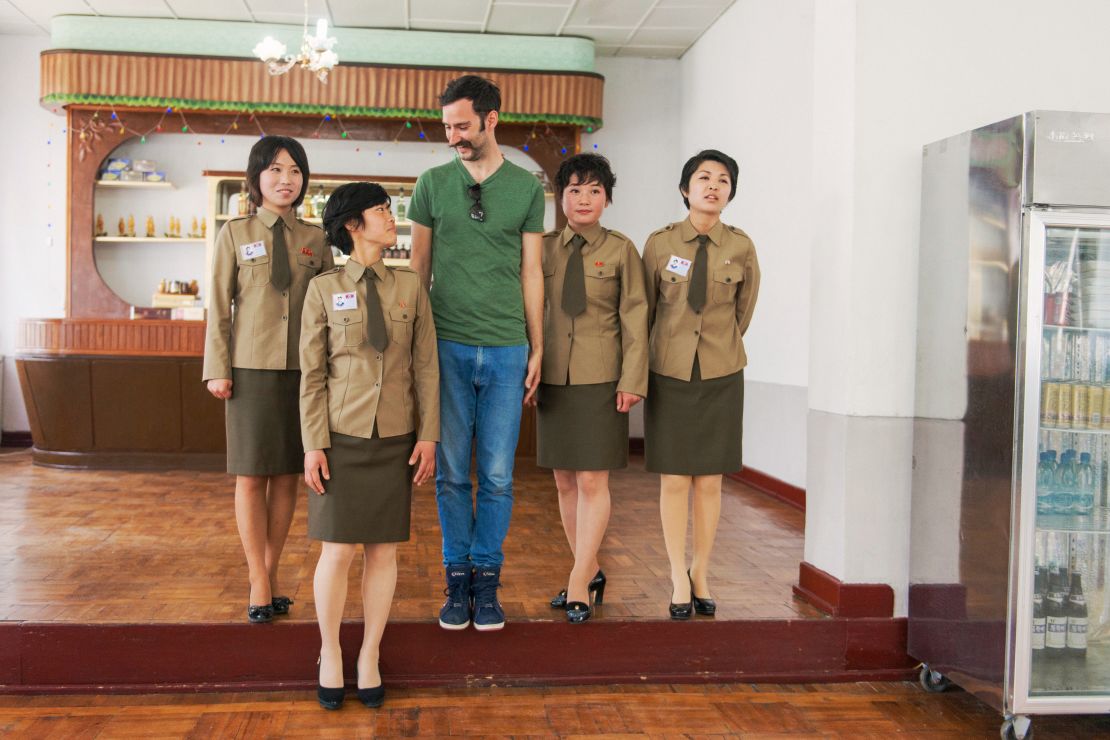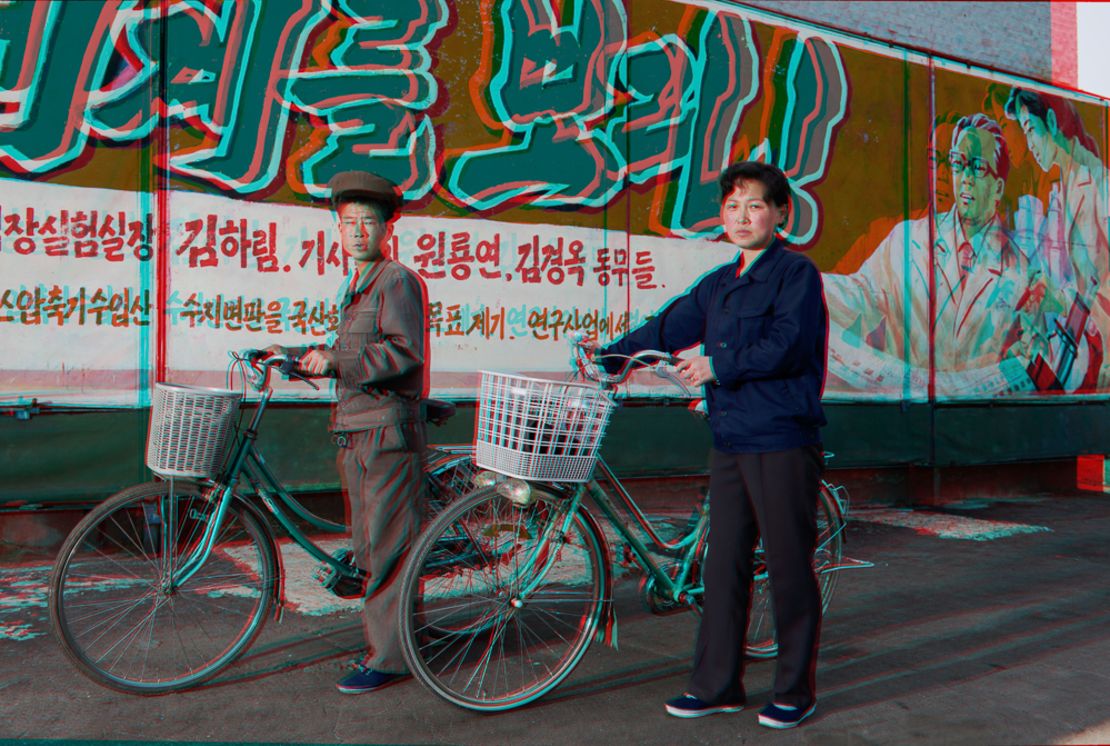Story highlights
Photographer Matja? Tan?i? captures 3D portraits of North Korean citizens
Photos part of 3DPRK, an exhibition and documentary film sponsored by Koryo Studio
The 3DPRK photo exhibition was shown in Pyongyang and is currently on tour in China
This weekend, the photos will be on display as part of a fundraiser for Tan?i?'s next project focusing on refugees
In a country known for its collective thought, the individual is rarely brought into the spotlight.
Slovenian photographer Matja? Tan?i? wanted to change that.
“Every time you hear about North Korea, it is propaganda or anti-propaganda, workers in the fields or military marches. I wanted to show the complete opposite. I wanted to shoot real people, individuals with a name, a face,” he says.
For Tan?i?, the best way to do that was to shoot in 3D – one of his specialties, and a very popular format in North Korea, where the project would be shown first.
“3D makes the individual even more enhanced. You can see each detail of the clothing, and become a voyeur, observing the space around the person.”
‘Like a Wes Anderson movie’

Tan?i? was invited into North Korea in 2014, for a 10-day tour around the country. The trip was organized and co-funded by Koryo Studio, the first Western art gallery to commission, exhibit and sell work by artists living and working in North Korea.
“It was like traveling back in time, it was like a Wes Anderson movie. But then you see mobile phones, and plasma TVs, and you realize it is the present day,” he says.
Tan?i?’s surreal journey was aimed at documenting some of the everyday people who make up the reclusive nation: the bartenders, doctors, farmers and factory workers.
For Tan?i?,?who lives in Beijing, it also became personal, having been born into the Communist state of what was then called Yugoslavia in Europe.
“If Americans see groups marching to the field with red flags and accordions, it must seem completely alien. But for me, it reminds me of pictures I saw when I was young. What I saw became intertwined with my own memories.”
Pushing the limits

During the trip, his team faced huge challenges. As with all visitors to North Korea, their itinerary was tightly controlled by official minders.
“Everything was scheduled, we had no free time, we couldn’t go anywhere on our own,” Tan?i? says. “Every single photo was a struggle.”
See Tan?i? takeover of CNN Style’s Instagram account
But after building the trust of his guides, Tan?i? began pushing the limits, making it his mission to photograph as many people as possible and resulting in more than 100 portraits.
“We would ask to meet people, they would refuse, I would ask for just one photo…and so on. I had to be patient,” Tan?i? says. “They tried to sell me their agenda, and I tried to get what I wanted.”
Challenging perceptions

One of his successes was to capture an image of cyclists, after six days of trying to convice his guides.
“Cyclists were everywhere, and they all rode the same model bike. But (the minders) didn’t want me to take photos of the cyclists, because they said they were not modern enough,” Tan?i? explains.
That sensitivity to how the images might be perceived was also held by some of those being photographed, including a gardener at a Pyongyang park full of miniature North Korean sites.
“I asked her to stand up next to the miniature library. But the lady refused,” Tan?i? says.
“She said she could not be shown in a photo being higher than the leaders in the background. So, I asked if she could kneel down, and she said yes.”
Read: North Korea’s candy-colored interiors
Exhibition shown in Pyongyang
As well as negotiating the cultural challenges, Tan?i? was also trying to shoot complicated 3D stereoscopic images.
“You have to trick your brain into thinking it is looking at two angles, by using two cameras connected with a tripod,” Tan?i? says.
“You can also shoot with one camera, then move and shoot again at the correct distance. I often had to use this technique in North Korea, because I didn’t have time to set up. I just told people to breathe in and try to stay still,” he says.
To the naked eye, the subjects in the photos stand out against what appears to be a slightly blurred background.

But when they are viewed with 3D glasses, it all becomes clear: the people look hyper-real, the background is sharp, and the viewer feels almost immersed in the scene.
The portraits were exhibited in Pyongyang last September,?one of the first western exhibitions to be shown inside North Korea.
Vicky Mohieddeen from Koryo Studio, who produced the project, said she wanted to bring a format well known in North Korea up to date.
“North Korea has a history of 3D: in its postcards, lenticular prints, holographic images. You don’t see it much anymore, but we wanted to bring it back with a new perspective,” Mohieddeen says.
The landmark production, which is now on display in Beijing, is expected to open the door for more foreign art exhibitions in North Korea. Koryo Tour, part of the same company as Koryo Studio, is also offering packages for foreigners to enter the Pyongyang marathon in April.
“The government is sending a message that the country is opening up,” Tan?ic says. “A lot of people in North Korea are still suffering, but having a cultural interaction with foreigners will help the country progress.”
3DPRK will be on display in Shanghai at M on the Bund. Tan?ic is looking to crowdfund his next project, “Heros”, focused on the refugee crisis in the Mediterranean. More information can be found here.



!["This was taken at a park in Pyongyang where they have [famous] sites but in miniature. This lady took care of the greenery in the area. I asked her to stand up next to the miniature library. But she said she could not have her photo taken with her higher than the leaders in the photo. So I asked if she could kneel down, and she said yes."](https://media.cnn.com/api/v1/images/stellar/prod/160119162143-north-korea-koryo-studio-3.jpg?q=w_1200,h_785,x_0,y_0,c_fill/h_447)


!["At this factory in the middle of the cornfields, this factory worker is also a farmer in the fields. They grow corn and harvest it, then they use it to make cookies, alcohol and noodles. [She] told me it was the first time she'd seen the machines working, that they'd had electricity."](https://media.cnn.com/api/v1/images/stellar/prod/160119162605-north-korea-koryo-studio-7.jpg?q=w_1000,h_672,x_0,y_0,c_fill/h_447)

!["This is in the same school: they were in technology class with lots of televisions. The [students] were learning how these things work."<br />](https://media.cnn.com/api/v1/images/stellar/prod/160119162744-north-korea-koryo-studio-9.jpg?q=w_1000,h_685,x_0,y_0,c_fill/h_447)








